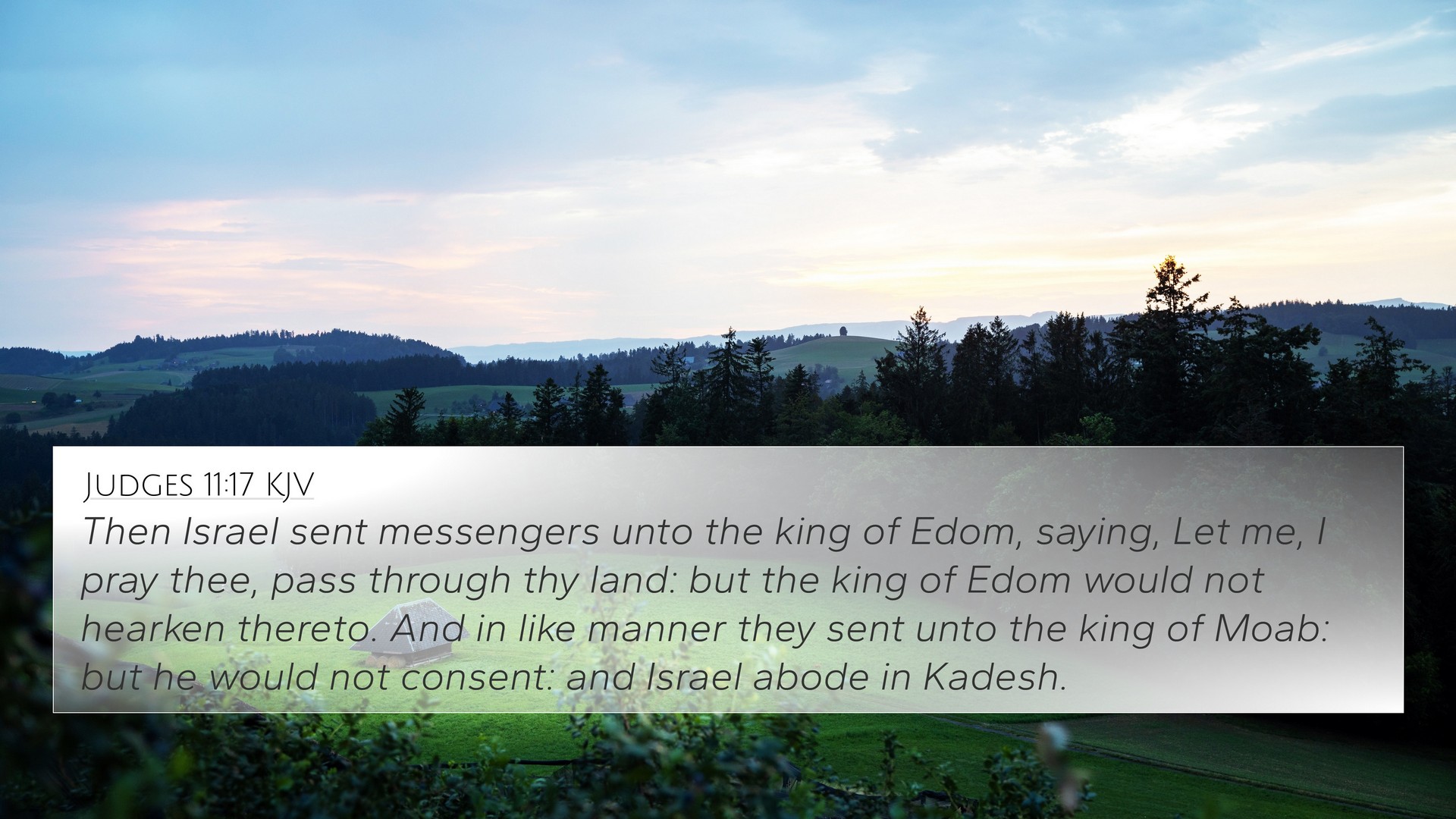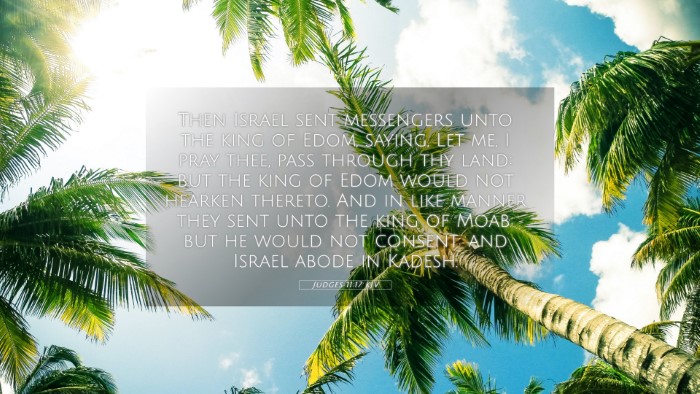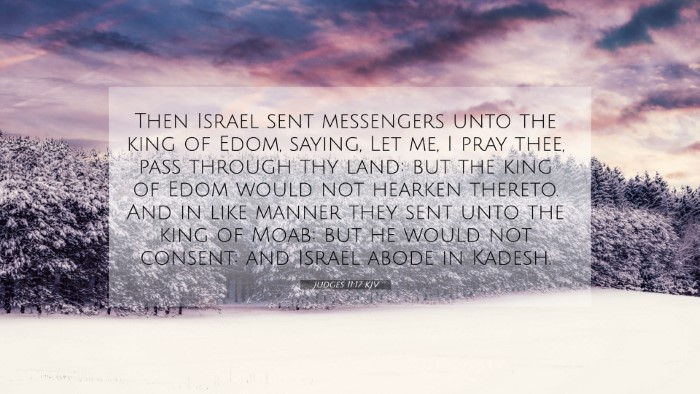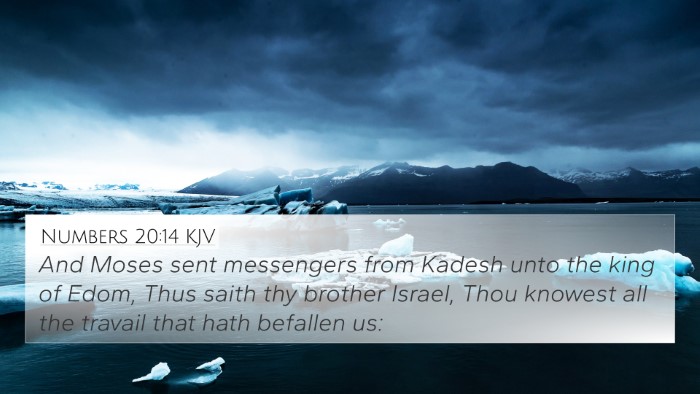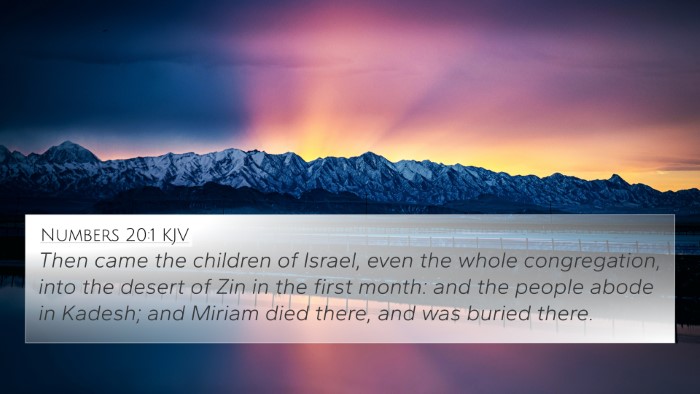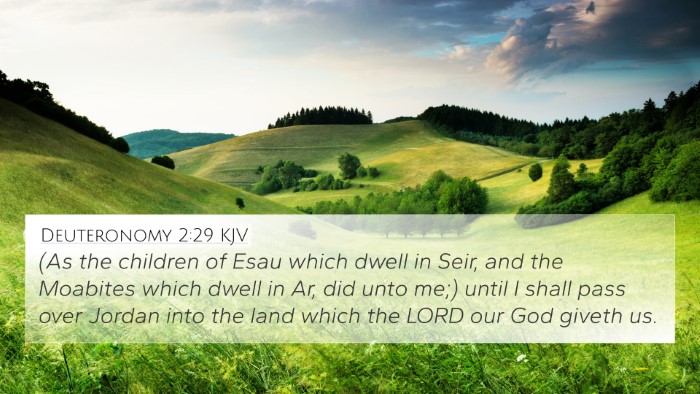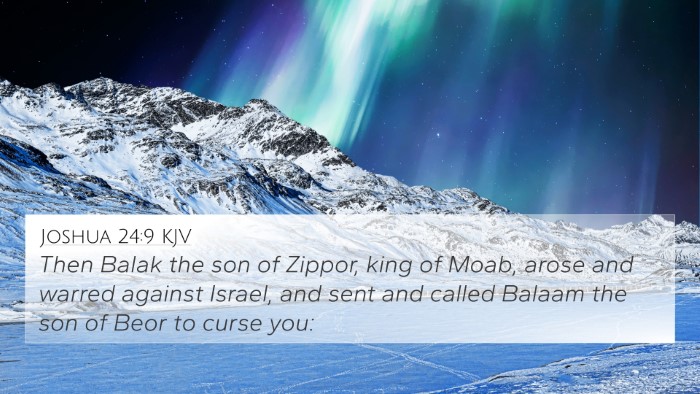Understanding Judges 11:17
The verse from Judges 11:17 reads:
"Then Israel sent messengers to the king of Edom, saying, 'Let me pass through your land; but the king of Edom would not heed. And in like manner they sent to the king of Moab, but he would not consent. So Israel remained in Kadesh.'" (Judges 11:17 NKJV)
Overview of Judges 11:17
In this verse, we find the Israelites seeking passage through the lands of Edom and Moab as they journey toward the Promised Land. Their request is denied, leading to a significant delay in their quest. This passage highlights themes of leadership, diplomacy, and the challenges encountered in pursuit of God's promises.
Commentary Insights
- Matthew Henry: Henry emphasizes the narrative's importance in illustrating the hardships faced by the Israelites during their journey. He notes that their request for passage was a sign of their desire for peaceful relations, reflecting their acknowledgment of Edom and Moab as neighbors.
- Albert Barnes: Barnes points out that the refusal by Edom and Moab to allow passage can be seen as an act of defiance against God's people. This serves as a reminder that the path to fulfilling God's promises often involves obstacles that test faith and perseverance.
- Adam Clarke: Clarke elaborates on the significance of Kadesh, the place where the Israelites camped. He explains that Kadesh was a crucial stopping point, and its symbolism of holiness is profound because it indicates a point of divine promise and testing.
Key Themes
This verse encompasses several key biblical themes:
- Perseverance: The Israelites' continued quest for passage illustrates the importance of perseverance in faith.
- Faith and Trust in God: Despite the rejections, their determination showcases their faith in God's guidance.
- Community Relations: The denial of passage reflects the complexities of inter-national relationships, especially within the context of neighboring peoples.
Cross-References for Deeper Understanding
To enhance comprehension of Judges 11:17, consider the following cross-references:
- Numbers 20:14-21: This passage details a similar request made by the Israelites to Edom, showcasing a pattern of denial.
- Deuteronomy 2:29: References the permission granted to the descendants of Lot (Moab) and to Edom, emphasizing their relationship.
- Exodus 23:31: God’s promise of land and the necessity of relying on Him for provisions along their journey.
- Jeremiah 48:1: A prophecy regarding Moab that provides context for their stance against Israel.
- Psalm 60:8: Mention of Moab's servitude, providing insight into the socio-political dynamics of the time.
- Genesis 36:1: Background on Esau’s descendants (Edom) and their historical context.
- Deuteronomy 2:9: God’s command regarding Moab, shaping the interaction seen in Judges.
Connections and Thematic Analysis
Judges 11:17 serves as a focal point for understanding broader narratives within Scripture. It highlights:
- Journeying as Faith: The Israelites' journey can be paralleled with the Christian walk today, emphasizing reliance on God.
- God’s Sovereignty: The rejections may appear as setbacks, but they are part of God's overall plan for His people.
- Faith in Adversity: The Israelites' response to adversity lays a foundation for understanding faithful perseverance.
The Importance of Cross-Referencing
Cross-referencing biblical texts is a vital tool for deeper understanding. Here’s how you might employ these tools:
- Utilize a Bible Concordance: This helps in identifying connections and shared themes across different scriptures.
- Explore Contextual Relationships: Analyzing the socio-political climate of the time provides additional layers of meaning.
- Comparative Study: Engaging in a study of parallels between Old and New Testament verses can provide fresh insights into leadership and obedience.
Conclusion
Judges 11:17 serves as a poignant reminder of the complexities faced by God's people as they seek to fulfill His promises amidst the challenges of human relationships and geographical obstacles. By employing cross-referencing techniques and understanding the thematic connections, one can gain a deeper appreciation for this passage and its relevance today.
